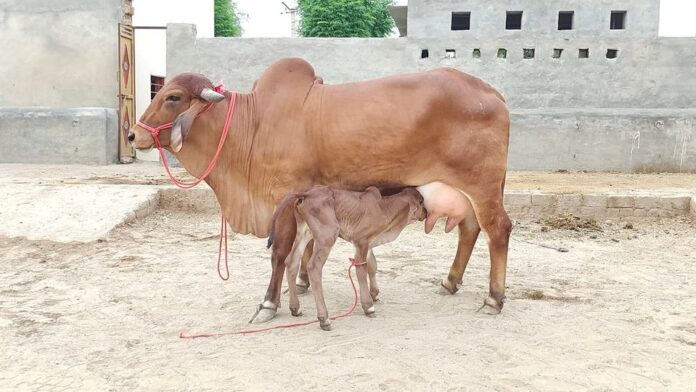Low productivity of Indian dairy animals challenges and mitigation strategies
Dr. Manisha Mehra
Assistant Professor
Department of Veterinary Pathology, CVAS Bikaner
India has the world’s largest dairy herd with over 300 million bovines producing over 187 million tonnes of milk. India is first among all countries in both production and consumption of milk. The economic impact of the dairy industry in India is substantial. Most of the milk produced comes from cow and buffalo, and then goat milk.
Low Productivity of Indian Dairy Animals depends on several factors-
Breeds of dairy animals reared by farmers, lack of knowledge in dairy farming, cultural background of people, Socio economic problems, deficiency of Dry and Green fodder, Climatic conditions (extreme hot& cold, Flood) Mastitis, Abortion, frequent outbreaks of diseases like Foot and Mouth Diseases, Hemorrhagic Septicaemia, Black Quarter infection; Influenza, nutritional deficiency (Mineral, Vitamins and energy), late maturity, unproductive dairy animals, disturbed oestrus cycle, less numbers of veterinary institutes, irregular and improper vaccination etc. are several factors responsible to Livestock health and lowers productivity.
Challenges and mitigation strategies:-
Improving the Breed by Artificial insemination, limited Artificial Insemination services owing to a deficiency in quality germ plasm, infrastructure, technical manpower, poor conception rate of artificial insemination are major issues.
Improper quality maintain of milk (aflatoxins is major problem) and dairy products, cause serious health risk. Due to problem of aflatoxins, our dairy products are not accepted by the international market. Plant-based milk, meat alternatives and vegan are choice of youth, which affect to dairy product cost.
Outbreaks of diseases like FMD, LSD, HS, BQ etc.
Shortage of feed and fodder:- reducing of grazing area day by day, development of industries and urbanization, raising of fodder price, poor quality of feed/fodder, low purchasing power of small and marginal dairy farmers, this results in the shortage of feed and fodder in the context of total demand.
Lack of knowledge of breeding behaviour:- farmers have less knowledge about heat symptoms and time of artificial insemination (when will be AI done), by this calving interval rise.
Infertility in animals: – Diseases causing abortion and mineral, hormonal and vitamin deficiencies lead to infertility in dairy animals affecting the industry.
Health and Hygiene: – to stop the outbreaks like FMD, HS, BQ proper vaccination is major challenge in dairy animals (sometimes animal’s not cooperate). Irregularity in vaccination schedules and deworming programs lead to heavy mortality in calves, especially buffaloes. As stated earlier, there is a lack of adequate immunity amongst cattle, making them susceptible to diseases. If animal shed and milking yards are unhygienic, mastitis develop in animals.
Lack of knowledge about housing system, management and poor drainage are also responsible for decrease production.
Education and Training: – Scientific education and training programs on good dairy practices is the need of current scenario and could overcome critical challenges faced. Education and training for all dairy sector employees become essential to develop a sense of ownership, and to inculcate proper knowledge of best practices. Implementing such programs in the dairy sector requires strong, relentless commitment from the management.
India’s large population of dairy animals raise methane gas in environment contributes to increase greenhouse gases.
How Industry can overcome these challenges
- General herd health management including vaccination and treatments
- Reproduction management (deliveries through timed AI protocols)
- Milking management (procedures, parlour setup, cleaning, sanitation)
- Veterinary Assistance
- Productivity management (including breed selection and tracking)
- Feed management (including newborn calves)
- Waste management (including newborn calves)
- Maintenance crew
- Organizational blueprint (including manpower utilization)
- Production and supply chain safety
- Location management (diagram or maps of where animals and facilities are located)



